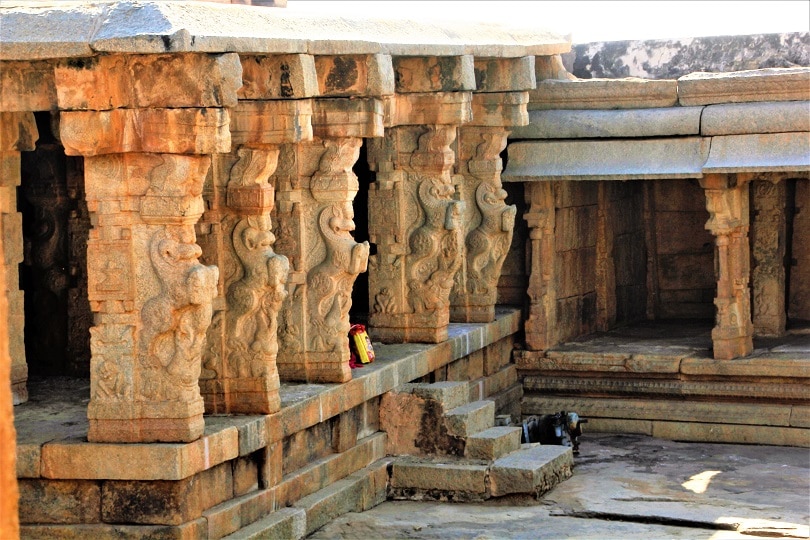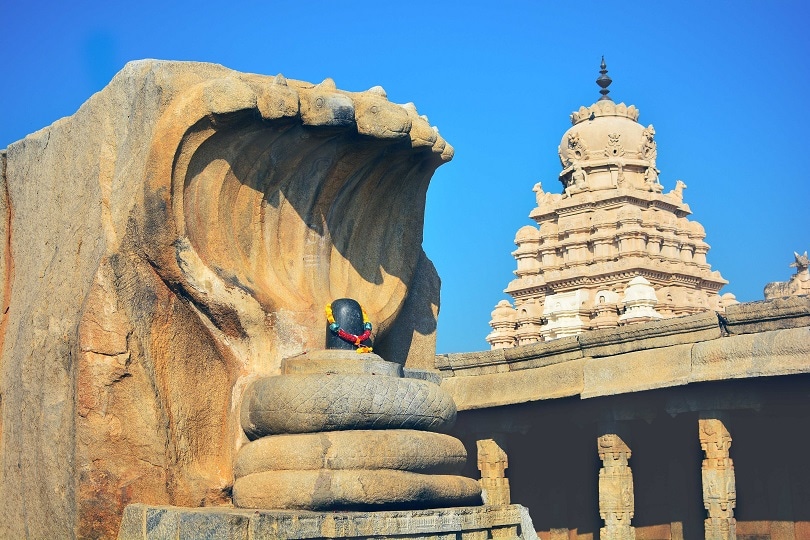Last February I packed up my traveling kit and set out for the airport in my city. I was destined to reach Bangalore. Bangalore to Lepakshi distanceis only 100km and can be easily covered by a cab. I was delighted to reach the place that houses a temple having its reference in the ancient scripture Skandapurana as one of the 108 most significant Lord Shiva temples in India. Yes, this time I was in search of a temple which is a tribute to the engineering genius of ancient and medieval India’s temple builders. Lepakshi is a small village located in Anantpur district of Andhra Pradesh, India.
This mind-blowing architecture of this temple here is stunning and it is believed that the temple was built by Sage Agastya according to the Puranas. The other saying is that two brothers Virupanna and Veeranna built it during the reign of Vijayanagara King Achyuta Devaraya. The Lepakshi Temple has three shrines dedicated to the Hindu Gods Shiva, Vishnu and Veerabhadra. If you are interested in History you may have the knowledge that Lepakshi was a famous center of trade and pilgrimage during the period of the Vijayanagara Kings. This makes Lepaksi temple a very important destination in the list of most famous historical places in India.

As I reached the site I discovered that I am quite lucky as a traveler. In this month of February, a festival known as the Ratham is held in the Lepakshi temple which attracts thousands of tourists. Inside the temple, you will find 70 pillars among which there is one pillar which does not rest on the ground fully. This is one of the amazing Hanging pillars of Lepakshi temple. This is an amazing piece of architectural wonder that has puzzled several experts and is believed that this miraculous pillar was intentionally built to demonstrate the architectural brilliance of the Vijayanagara builders. These hanging pillars of Lepakshi have some secrets that I can bet you didn’t know before:

1. The hanging pillar is a bit dislodged from its original position. A British engineer tried to move it in an unsuccessful attempt to uncover the secret of its support and this is the reason behind this shift. There is a giant Ganesha statue in the temple’s outer enclosure. I was astonished to witness a gigantic Nagalinga with three coils and seven hoods here which probably is the largest one in my country.
2. The name of the hanging pillar is the Aakaasa Sthambha. The pillars and walls of the temple have the images of a divine entity, dancers, saints, musicians, and 14 avatars of Shiva. You will find three separate Mandapas in the Lepakshi Temple. The first one is Mukhya Mandapa (or Natya or Ranga Mandapa), Artha Mandapa and Garva Griha comprises the second one and the third one is Kalyana Mandapa. The last Mandapa is unfinished.
3. The temple is built on a low, rocky hill called Kurmasailam — which means tortoise hill in Telugu. The shape of the hill resembles a tortoise. Devotees worship Shiva in the ferocious mood named as Veerbhadra. Veerbhadra was worshipped during wars in ancient and medieval periods as the warrior god.
4. The Lepakshi temple has the finest specimens of mural paintings of the Vijayanagar kings.Fresco of Veerabhadra on the ceiling before the antechamber is the largest in India of any single figure. The scenes of Rama and Krishna from famous epics Ramayana, Mahabharata and the Puranas are the main subjects of the paintings of the inner hall and the fresco technique with bright colors is used to do the artwork. A frieze depicting a flock of geese with lotus stalks in their beaks is simply awesome. The entire temple is adorned with flawless carvings and all of them are done with the intricate details.
A blend of vegetable and mineral colors makes the walls of the Lepakshi temple extraordinary and vibrant. The statuettes of goddesses Yamuna and Ganga in the entrance gate is marvelous. Decorations in the form of carvings of soldiers and horses on the exterior columns made me speechless. Here, you can see Lord Brahma playing drums, heavenly maiden Rambha performing dance and Lord Shiva engaged in ‘Ananda Tandava’. The carvings of dancing nymphs around it mesmerized me. The image of Parvati surrounded by the female attendants decorates the southwest hall.
5. Abhishek to Lord and Mother is done and devotees offer clothes during puja. Sweet pudding called Sarkarai Pongal Nivedhana is also a custom here. Sadari blessing with the lotus feet of the Lord Vishnu is offered to devotees. The prasad in the temple is the beetle leaf.

Another attraction, other than Hanging pillars of Lepakshi temple, is the Nandi, located a mile before the main entrance of the temple. It is a spectacular 27 ft long and 15 ft monolithic sculpture biggest in India. Lepakshi Temple also has the idols of Ganesha, Nandi, Veerabhadra, Shiva, Bhadrakali, Vishnu and Lakshmi.

Lepakshi temple timingsare from 6 AM to 6 PM daily for Darshan. 7 AM to 7:30 AM is the Abhishek timing. Darshan is open on all days in a week. Make sure to collect detailed information of the temple timings prior to your visit as it may change during festivals, important rituals and during an eclipse. The Shivalinga is worshipped first and offerings are made to Lord Veerabhadra. In the morning the lord is in dressed up in Bala rupa (youth) and a mustache is added to his appearance to portray him as a hero, during the evening puja. Remember the standard dress code here is decent clothes. Don’t carry belts or leather bags etc. Photography is not prohibited inside this temple so you can carry your camera.
Artistic and archaeological splendor makes this temple a center of attraction to the pilgrims far and near. I heard the story of the treasurer who was found guilty for using the royal treasury for construction of this temple was punished by the king who gave the order of making him blind and as he was a loyal person he carried out the punishment on the spot with his own hands. You can see dark stains on the wall near the ‘Kalyana Mandapa’ bearing the mark of this incident. The village is thus named Lepa-akshi or Lepakshi meaning a village of the blind eye.

Please go back to portrait mode for the best experience